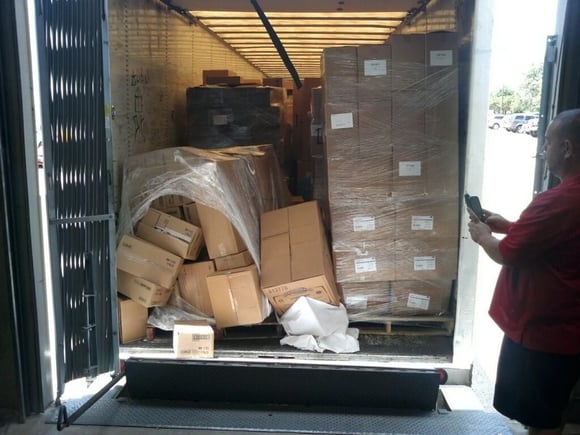REDWOOD LOGIN
Redwood PortalLTL
SCS
SCS Support
Rockfarm
 Shipping and logistics departments strive to never have to complete freight claims, but the ugly truth is that damage to and loss of freight does happen, and your logistics department needs to be proficient in filing freight claims in order to make the insurance process move quickly and efficiently. Unrecovered freight claims affect the company’s bottom line dollars tremendously. If a $1,000 freight claim is not recovered, a company must generate $20,000 in sales just to make up for it--and that's companies at only a five percent profit margin.
Shipping and logistics departments strive to never have to complete freight claims, but the ugly truth is that damage to and loss of freight does happen, and your logistics department needs to be proficient in filing freight claims in order to make the insurance process move quickly and efficiently. Unrecovered freight claims affect the company’s bottom line dollars tremendously. If a $1,000 freight claim is not recovered, a company must generate $20,000 in sales just to make up for it--and that's companies at only a five percent profit margin.
Use this guide to help your existing team members refresh their memories on the steps to filing a freight claim or train new employees who have never filed a freight claim before.
A freight claim is a claim against the shipper's carrier legally demanding payment after the bill of lading or contract of carriage is breached. The steps to filing a freight claim are governed by the law which is why it is even more important to follow the correct procedures when submitting one. Claims are also bound to government regulations that involve interstate commerce.
You can find the claims rules on the carrier's tariffs or within the details of the bill of lading.
There is no specific form required by law to be used for a claim; however, all freight claims must have four essentials elements:
The claimant can only be the company having title to the freight commodity or the company that has assumed the risk for freight lost or damaged in transit. The claim will be filed against the delivering carrier or possibly the originating carrier depending on the situation. Claims can sometimes be filed against intermediate carriers; however only if the loss can be proven to be in connection to a specific carrier truck.
When identifying the shipment, you must list the following information about the freight load:
The information for the value of freight should be found on the bill of lading. When identifying the type of loss, notate whether the goods were damaged, the percent of freight that was damaged and it's valuation, or that the freight was missing upon delivery.
You must list the details of the freight as individual by type of item rather than as a general whole. For example:
2 cartons of women's clothing water damaged at @$500 each = $1,000
5 cartons of men's shoes water damaged @$100 each = $500
10 cartons of children's toys missing @$100 each = $1,000
The total cost of damages: $2,500
Less salvage (what you were able to save from the shipment if anything)
Then list the total amount of Freight Claim that you are seeking payment for.
Freight claims must also include the names and addresses of the shipper and receiver of the freight. All stop-off locations must be listed where loading or unloading occurred. The information on the liability of freight charges should also be recorded on the claim. This information includes whether the freight was collect, cash on delivery, or prepaid. The bill of lading will note any limitations on liability and should be referenced.
There will also be supporting documentation needed when filing a freight claim. Some of the forms you will want to include are:
• Original Bill of Lading (always keep a copy)
• Paid freight bill
• Inspection reports
• Proof of commodity value
• Notification of loss
• Waiver of inspection if needed
• Photographs
• Police reports
• Dumping certificates
• Impact records
• Laboratory analysis
• Weight certificates
• Package certifications
• Quality control reports
• Affidavits
• Loading and unloading tally sheets
You may or may not have all these documents, and many of these may not be needed depending on the individual loss or damage that has occurred.
Freight claims must be sent and received by the carrier within the time specified in the contract, or as defined by law. In most cases, this is nine months from the date of freight delivery. The date of receipt of the freight claim by the carrier is vital for the timely recovery of the claim so delivery methods must include confirmation of receipt. Methods of delivery that are appropriate include:
• Fax
• Certified mail
• Express courier services
• Electronic Data Exchange
Address the claim to the carrier's claims manager unless there are instructions to do otherwise. Always send the claim to the carrier's home or corporate offices, not a hub. Do not deliver freight claims in person to a carrier or send a freight claim with a driver.
Always number the freight claim and record it the way your company prefers whether it be through a computer system, log book or both. Make copies of anything that was sent out with the freight claim to keep on record as the claimant. Always include claim numbers on any and all correspondence with the carrier or their representatives.
If you are having consistent damage issues, it might be time to look into a different carrier set with lower damage rates. A reputable 3PL can help you get superior services carriers at a much lower cost than an individual shipper can acquire on their own. Contact us here at LTX today to see how we can help decrease your damages, and the need to deal with pesky freight claims!